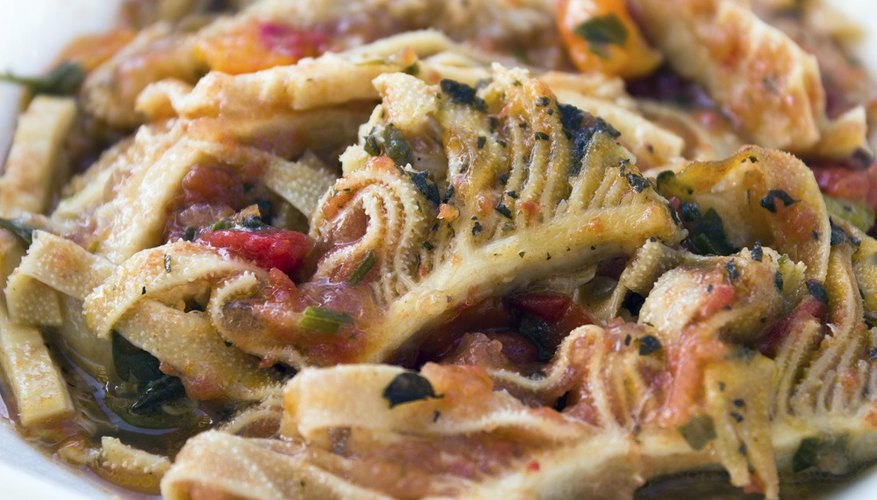Tripe is made from the cow's stomach. A cow has four stomachs, according to PracticallyEdible.com, and there are different types of beef tripe depending on which stomach is used. The different types of tripe are recognised in foreign countries. Tripe is prepared differently, depending on the country. For example, England tripe must be bleached and blanched before it can be sold.
Plain Tripe
Plain tripe is known as "gras double" by the French. This tripe is from the first stomach in the cow, the rumen. This is the least popular of all tripe. Plain tripe appears flat and smooth, like a blanket.
- Plain tripe is known as "gras double" by the French.
Book Tripe
Book tripe is from the third cow's stomach, the omasum. This looks life a leaf and is called "le feuillet" in France, Practically Edible reports.
Honeycomb Tripe
Honeycomb tripe is from the second cow stomach, the reticulum. In particular, it is from the lower part of this stomach. This tripe is the most desirable, as it is the meatiest and tender even after cooking. Unlike other tripe, it maintains its shape after it is cooked. This tripe is frequently cooked with sauce, as the texture of the tripe allows for sauce to easily stick to the meat.
- Honeycomb tripe is from the second cow stomach, the reticulum.
- This tripe is the most desirable, as it is the meatiest and tender even after cooking.
Reed Tripe
Reed tripe comes from the cow's fourth stomach, the abomasum. This type of tripe has many names, depending on the country. There are two parts to this stomach, one that is fattier and smoother with a stronger taste. The other part is rippled, darker and more mild.
- Reed tripe comes from the cow's fourth stomach, the abomasum.
- There are two parts to this stomach, one that is fattier and smoother with a stronger taste.
